The Constructor: The Legacy of El Lissitzky
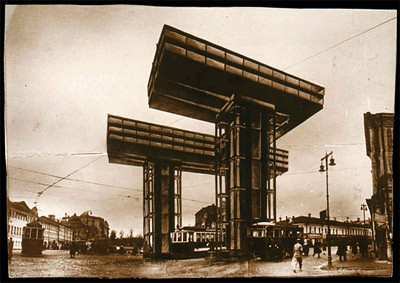
This building is called the Wolkenbügel, or Cloud-Iron. It was designed – though never built – in 1925 by artist El Lissitzky. That’s right – 1925! As in many of his other works, which spanned vastly different media, the Wolkenbügel underscores Lissitzky’s belief in the beauty of industrial production and a desire for pure monuments of technological progress.
There’s something very dark about Lissitzky’s propaganda art. Not dark in any sort of contrived “I’m trying to scare you” kind of way; on the contrary, his still, supreme and aphotic images are filled with nothing but love.
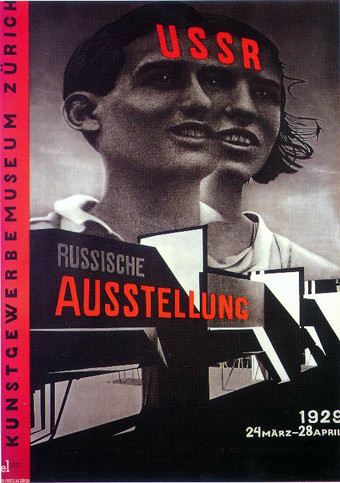
It’s no surprise that Lissitzky was a huge influence for many industrial musicians and electronic pioneers; his work was used on the back of Kraftwerk’s “The Man Machine,” on the cover of Clock DVA’s “Man-Amplified,” and for a Laibach poster called “La Liberte Guidant Le Peuple.” Incidentally, Lissitzky was good friends with artist Kurt Schwitters, whose project Merzbau inspired Japanese noise artist Merzbow to adopt the same name. Together, Lissitzky and Schwitters produced Merz Magazine, which many graphic designer historians still regard as one of the most beautiful magazines ever made; here is a front and a back cover that Lissitzky designed.
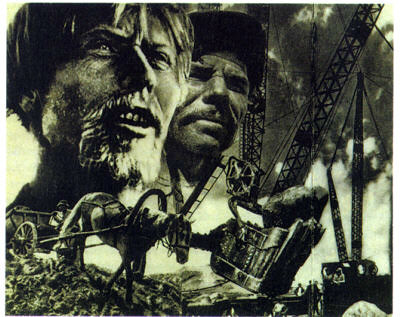
Though he passed the entrance exams, Lissitzky was rejected from art school as a young man because the Tsarist regime placed a quota on Jewish students. Jewish themes and Hebrew letters were prevalent in his earliest work, but soon became replaced by his passion for Suprematism, an art movement that rejected the imitation of natural shapes in favor of fundamental geometric forms. The Hebrew letters later resurfaced in his most abstract architectural designs. All throughout his life, he remained loyal to Soviet ideology and produced some of his most striking propaganda works in his later years.
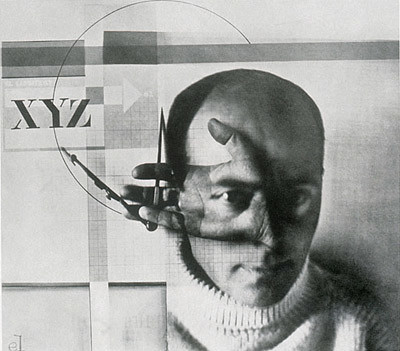
One of my favorite pieces by Lissitzky is his self-portrait, The Constructor. When I look at it, I see a man who knew exactly what kind of artist he wanted to be, and knew how to express it. Lissitzky was limited in many ways by the Soviet Regime (the government couldn’t afford to build any of his architectural designs, driving him back to what was perhaps his lesser passion, graphics) and by illness (his tuberculosis severely impeded his ability to work and eventually killed him) – yet despite these things, he never lost faith in his ideals and produced work until the very year he died, leaving the world with one last poster called “Give Us More Tanks!”, a rallying cry for Russia’s fight against Germany in 1941.
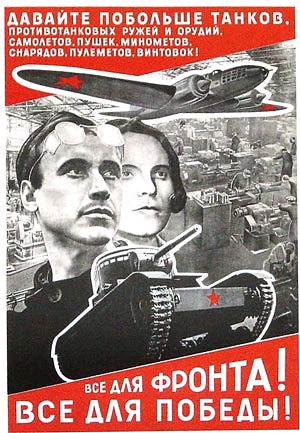
“Give Us More Tanks!”
Lissitzky’s designs still stand up to the most avant-garde design work done today. Swiss Typographer Jan Tschichold wrote of him, “a generation that has never heard of him… stand upon his shoulders.” This is very true. If he were alive today, I’d make him a mix tape with Test Dept on it and say “thank you for everything.” Often, when I am designing, I ask myself: “WWELD – What Would El Lissitzky Do?” It’s a good question to ask yourself – in Photoshop or in the real world.
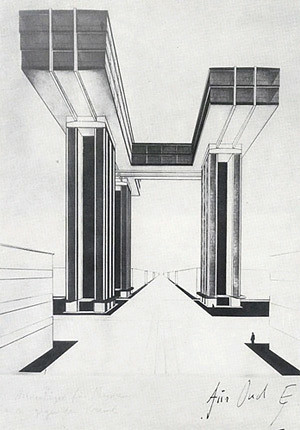
More:
El Lissitzky Wikipedia Entry
El Lissitzky at the Getty Research Institute – Comprehensive!

October 10th, 2007 at 9:35 am
Amen, sister. One of the more underrated geniuses of his time. GIVE US MORE LISSITZKY.
October 31st, 2007 at 10:02 pm
Another El Lissitzky poster from A Soviet Poster A Day.
October 31st, 2007 at 10:13 pm
Thanks, Jason! I love that one.
June 3rd, 2008 at 10:16 am
GREETINGS FROM MEXICO CITY
THI IS THE BEST EXPOSITION THAT I SAW IN MY LIFE
April 2nd, 2009 at 7:19 am
wow. Thank you for a superior website. I learned so much.
Judy